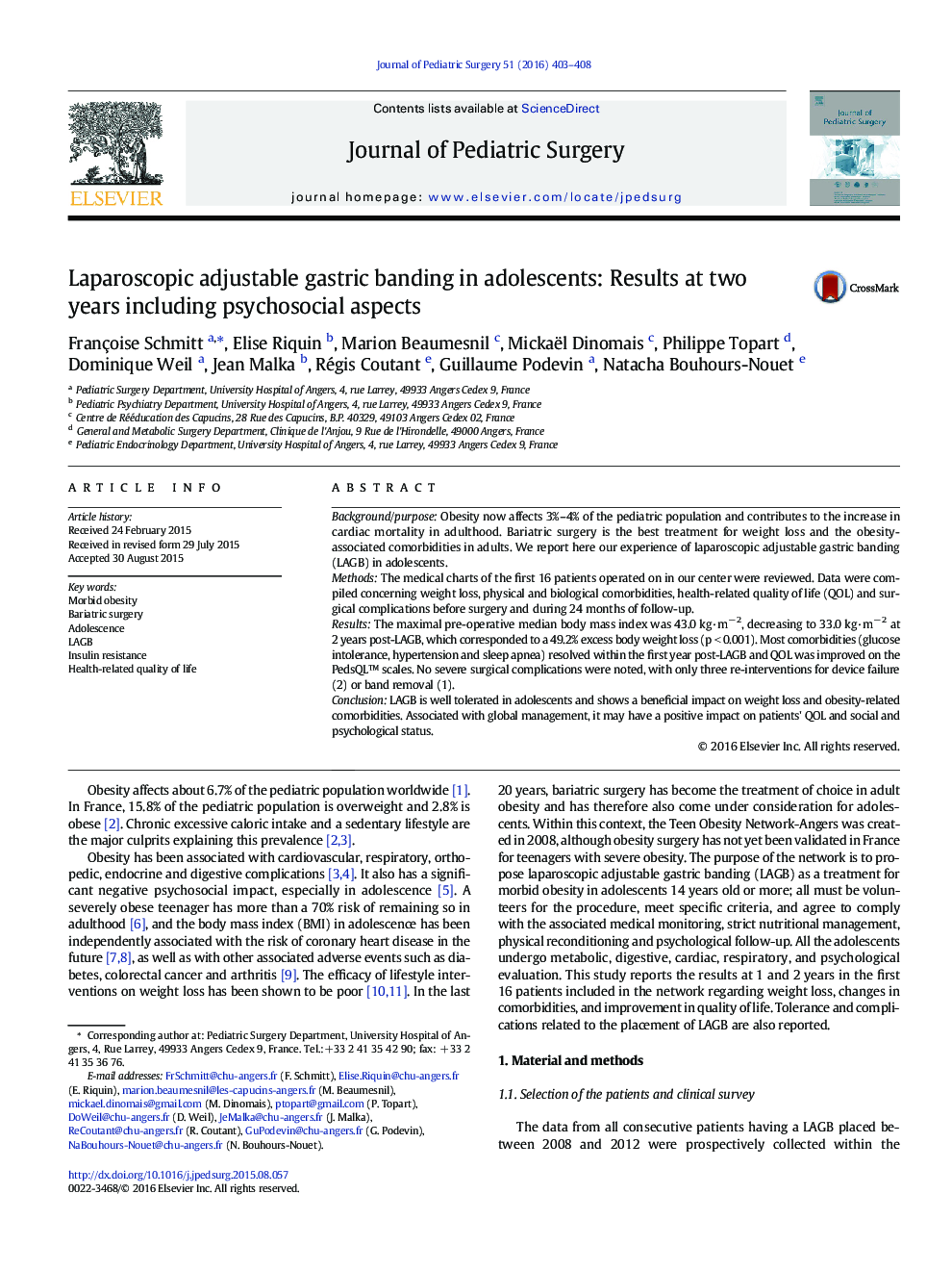| Article ID | Journal | Published Year | Pages | File Type |
|---|---|---|---|---|
| 6216632 | Journal of Pediatric Surgery | 2016 | 6 Pages |
Background/purposeObesity now affects 3%-4% of the pediatric population and contributes to the increase in cardiac mortality in adulthood. Bariatric surgery is the best treatment for weight loss and the obesity-associated comorbidities in adults. We report here our experience of laparoscopic adjustable gastric banding (LAGB) in adolescents.MethodsThe medical charts of the first 16 patients operated on in our center were reviewed. Data were compiled concerning weight loss, physical and biological comorbidities, health-related quality of life (QOL) and surgical complications before surgery and during 24 months of follow-up.ResultsThe maximal pre-operative median body mass index was 43.0 kg·mâ 2, decreasing to 33.0 kg·mâ 2 at 2 years post-LAGB, which corresponded to a 49.2% excess body weight loss (p < 0.001). Most comorbidities (glucose intolerance, hypertension and sleep apnea) resolved within the first year post-LAGB and QOL was improved on the PedsQL⢠scales. No severe surgical complications were noted, with only three re-interventions for device failure (2) or band removal (1).ConclusionLAGB is well tolerated in adolescents and shows a beneficial impact on weight loss and obesity-related comorbidities. Associated with global management, it may have a positive impact on patients' QOL and social and psychological status.
